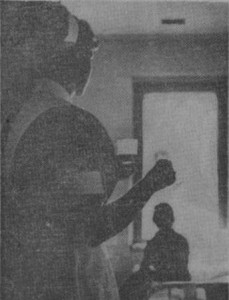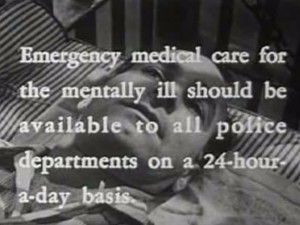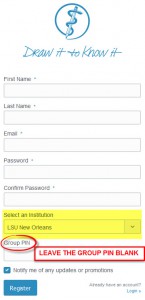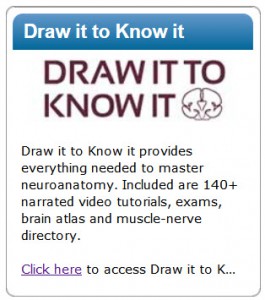In America, methods of care for our mentally ill have become intertwined with the politics of universal healthcare, hospital administration, and prevention of violent crime, all of which suffer under an increasingly budget-cut government. This issue is not a new one, however. The Newspaper Clippings Digital Collection of the Isch?® Library shows an emerging pattern: a pattern of need. Hospitals and treatment centers need enough beds for psychiatric patients; hospitals need staff to treat those patients; police officers, clergy, and even the general public need training to assess and assist the mentally ill.
Linkages of mental illness and criminal tendencies also surface. In recent news, LSU psychiatrist Dr. Jose Calderon-Abbo joined the vice presidentÔÇÖs task force on gun violence; he has also partnered up with Tulane public health criminology expert Dr. Peter Scarf to present a paper of similar topic to the House Subcommittee on Crime, terrorism, and Homeland Security at a hearing on The Youth Promise act.
Not only do mental illness and crime sometimes occur simultaneously, but those charged with apprehending the mentally ill are often the same people who apprehend criminals.?á One of our newspaper clippings from 1961, entitled ÔÇ£How Police Can Help Mentally Ill,ÔÇØ addresses the need for officers of the law to be properly trained on how to interact with, assess urgency of treatment for, and detain suspects who appear to be suffering from illness, loss of competency, or loss of sanity.
The clergy are often called upon to assist the mentally ill; one article, ÔÇ£Help of Clergy Asked by Many: Role of Churchmen for Mentally Ill Cited,ÔÇØ explains how the clergy ought to be well versed in tactics to understand and aid their congregations. Examples of tactics used to interact with those in need in the include: a manual from 1954 ÔÇ£How to Recognize and Handle Abnormal PeopleÔÇØ by Robert A. Matthews and Loyd W. Rowland, former director of the Louisiana Association for mental health and former Head of the department of psychiatry and neurology, ?áin addition to a 1960 New Orleans officer training film, ÔÇ£Booked for Safekeeping,ÔÇØ produced by George C. Stoney.
In 1961, the name of the game was “expedite”: complex legislature  required the approval of a hospital director, an order of commitment signed by the coroner, a psychiatrist, and a responsible party, and approval from a civil judge. Convoluted commitment laws and lack of funding for psychiatric facilities and staff were concerns at this time, but these concerns continue today as the Greater New Orleans area loses beds at Charity Hospital and MandevilleÔÇÖs Southeast Louisiana Hospital.
required the approval of a hospital director, an order of commitment signed by the coroner, a psychiatrist, and a responsible party, and approval from a civil judge. Convoluted commitment laws and lack of funding for psychiatric facilities and staff were concerns at this time, but these concerns continue today as the Greater New Orleans area loses beds at Charity Hospital and MandevilleÔÇÖs Southeast Louisiana Hospital.
In the words of Dr. Robert A. Matthews, former head of the department of neuropsychiatry at LSUHSC from 1950-1957, ÔÇ£While we are passing the hat around for money to fight polio, heart disease, cancer, tuberculosis and other maladies, we ought also to be financing some exploration in to the cause and cure of emotional storms and mental defectiveness. We are fast becoming a nation of neurotic people.ÔÇØ
Glimpse of the Past is an ongoing project to promote the Louisiana Digital Library effort. This Month in History will present for your reading pleasure a closer look into a newspaper clipping of note from our Digital Collections and articles relating to the LSU Medical School.


 myLSUHSC
myLSUHSC



